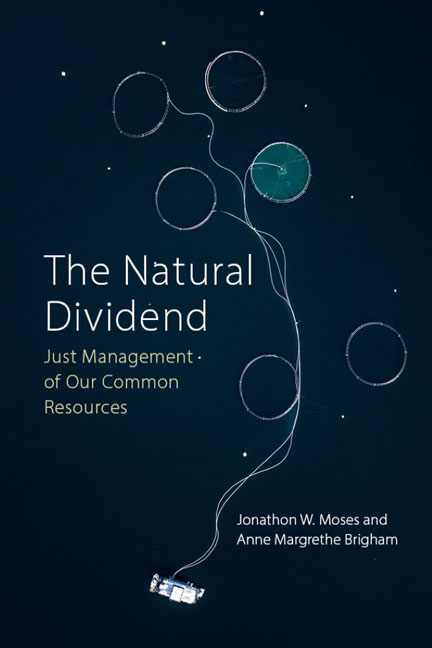Book contents
- Frontmatter
- Dedication
- Contents
- Acknowledgements
- Abbreviations
- 1 Introduction
- 2 Who owns the sun?
- 3 The Natural Dividend
- 4 The earth: the market for land
- 5 The sea: the market for salmon
- 6 The sky above: the market for renewable energy
- 7 The earth beneath: the market for fossil and mineral resources
- 8 A common market? The market for global resources
- 9 Conclusion
- References
- Index
8 - A common market? The market for global resources
Published online by Cambridge University Press: 20 January 2024
- Frontmatter
- Dedication
- Contents
- Acknowledgements
- Abbreviations
- 1 Introduction
- 2 Who owns the sun?
- 3 The Natural Dividend
- 4 The earth: the market for land
- 5 The sea: the market for salmon
- 6 The sky above: the market for renewable energy
- 7 The earth beneath: the market for fossil and mineral resources
- 8 A common market? The market for global resources
- 9 Conclusion
- References
- Index
Summary
With this chapter, we shift our parallax. In the preceding chapters we have examined how political authorities have enclosed and allocated access to different types of resources on (or around) their own sovereign territories. Each of these resources has been located on sovereign territory, or in near proximity to that territory – in surrounding coastal waters, immediately above, or below, the sovereign surface. Although the natural resources found in each of these sovereign spaces may produce Natural Dividends, surprisingly few states have been willing or able to secure them for their people.
This chapter considers the challenge of enclosing and allocating access to familiar (and common) resources in the absence of sovereign authority. In short, we begin where the other chapters left off: on managing the resources that remain, after nation states make their sundry claims on the globe. We refer to the global commons, and use that term for the resources that lie beyond sovereign space: outer space, the inner earth, the high seas (and the sea bottom that lies beneath) and Antarctica. These resources resemble the “common goods” (res communes) identified by Hugo Grotius in his seminal (1608) Mare Liberum, as they belong to everyone and to no one.
Our interest in the global commons is threefold. First and foremost, these common areas offer the next frontier for global resource extraction. Because global demand has outstripped our capacity to provide these resources in sovereign political terrain, we now search for them in the global commons. It is the inadequacy of our current supply in these markets that drives our interest and expansion into the global commons: we go there in search of new sources for familiar, but scarce and valuable, resources. In other words, the markets for these resources are familiar; we are simply extending our reach into new, less charted, political terrain.
This interest is most obvious in space, which has become a competitive playground for the world's richest men, jousting for control over the future market for space tourism. But it is also evident in a number of new enterprises that hope to mine asteroids and planets for rare minerals/metals needed on earth; or with the entrepreneurial dreams to launch high-altitude wind turbines (Levitan 2012) or to secure space-based solar power (Financial Times 2021; Frazer-Nash Consultancy 2021).
- Type
- Chapter
- Information
- The Natural DividendJust Management of our Common Resources, pp. 199 - 220Publisher: Agenda PublishingPrint publication year: 2023

